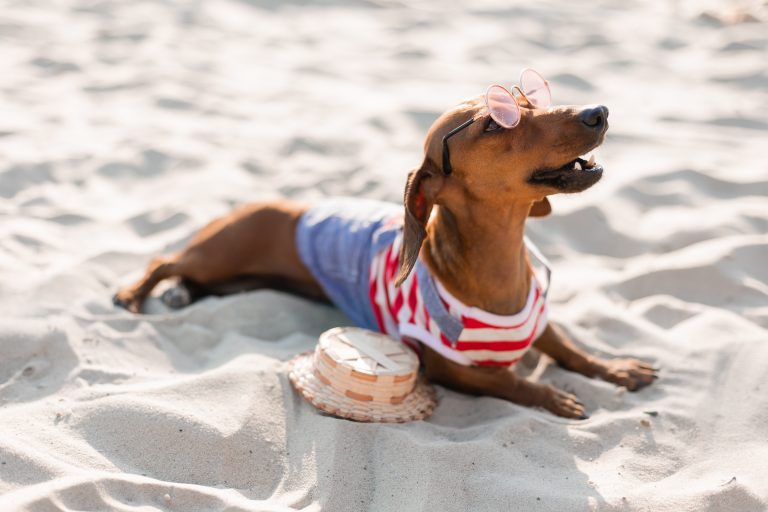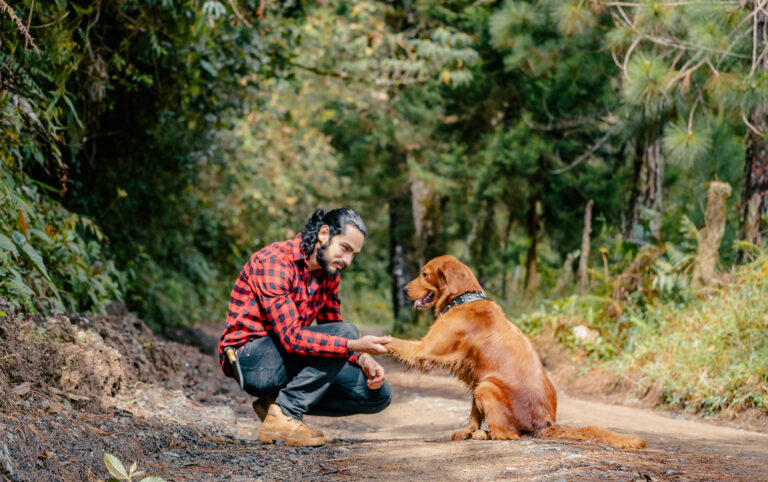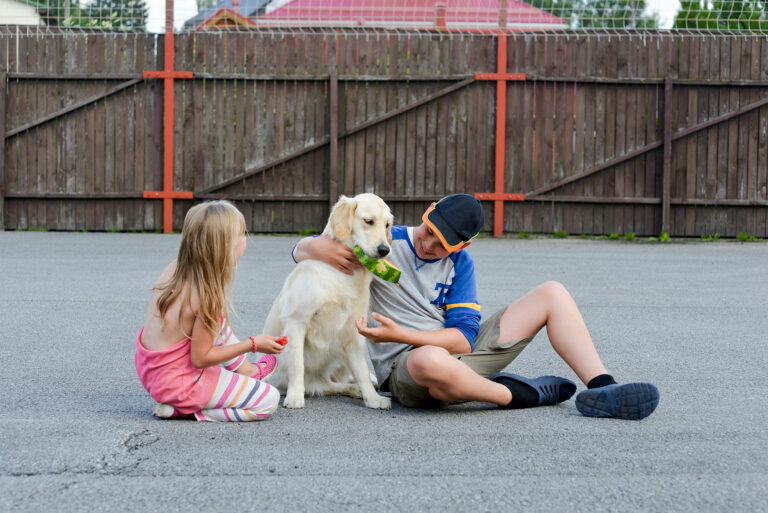When the sun is shining and the beach is calling, your instinct is to grab the sunscreen. But have you ever looked at your dog and wondered, “Does my dog need sunscreen too?” The answer might surprise you. While dogs have fur as their natural armor, it doesn’t offer complete protection—especially for certain breeds, body parts, and activities.
If you’re planning summer hikes, beach days, or just backyard lounging with your pup, it’s time to talk about canine sun care. Yes, sunscreen can be necessary for dogs, and this vet-backed guide will help you know when, where, and how to apply it safely.
Table of Contents
Why Dogs Can Get Sunburned Too
Why Dogs Can Get Sunburned Too
Contrary to popular belief, your dog’s fur isn’t a full-body sunblock. Just like humans, dogs can suffer from sunburn, skin damage, and even skin cancer due to excessive sun exposure. While most dogs are protected in heavily furred areas, many have vulnerable zones like:
- Nose and snout
- Ear tips
- Around the eyes
- Belly and groin (especially for light-colored or short-haired dogs)
- Any shaved or thinly haired spots
White-coated, short-haired breeds like Dalmatians, Boxers, Pit Bulls, and Greyhounds are particularly susceptible. If your dog has pink skin or sparse fur, they’re at a higher risk of UV damage—even on cloudy days.
Signs of Sunburn in Dogs
Sunburn in dogs isn’t always immediately obvious. Look out for:
- Red or inflamed skin
- Dry, cracked, or flaking patches
- Excessive licking of sensitive areas
- Whimpering when touched
- Warm skin or discomfort in specific spots
Severe sunburns may blister or peel and can lead to long-term damage if not addressed. Just like with people, frequent sunburns increase the risk of skin cancers such as squamous cell carcinoma or hemangiomas in dogs.
When Sunscreen Is a Must
Not every dog needs sunscreen 24/7—but many benefit from it during specific situations. You should consider dog-safe sunscreen if:
- Your dog is outside between 10 a.m. and 4 p.m., when UV rays peak
- You’ve shaved your dog for summer and exposed more skin
- You’re at high altitudes, beaches, or anywhere with reflective surfaces
- Your dog loves to sunbathe on patios or decks
- Your pup has light-colored skin or fur, or suffers from allergies/skin sensitivity
In short, if your dog is spending extended time outdoors and has any exposed or vulnerable areas, sunscreen isn’t optional—it’s a form of protection.
What Kind of Sunscreen Is Safe for Dogs?
Never use human sunscreen on your dog, especially those containing zinc oxide or PABA (para-aminobenzoic acid). Both are toxic if ingested—and let’s face it, dogs are going to lick.
Instead, look for dog-specific sunscreens labeled as non-toxic, fragrance-free, waterproof, and safe for ingestion. These are formulated to protect while accounting for canine behavior and skin chemistry.
You can also use natural alternatives like coconut oil or shea butter for mild sun exposure, though they don’t offer the same UV protection and should be applied carefully. Better yet, talk to your vet—they may recommend a prescription sunscreen for dogs with sensitive skin or ongoing dermatological conditions.
How to Apply Sunscreen to Your Dog
Less is more—but you’ve got to be thorough. Here’s how to apply it safely:
- Focus on exposed areas: Nose, ears, belly, groin, and any shaved spots.
- Rub in gently: Use your fingers to work it into the skin—avoid eyes and mouth.
- Distract immediately: Give your dog a chew toy or treat to keep them from licking it off right away.
- Reapply as needed: Especially after swimming, rolling in the grass, or extended outdoor play.
Remember to test a small patch the first time to rule out any allergic reactions.
Additional Summer Skincare Tips
Beyond sunscreen, there are other smart ways to protect your dog’s skin and coat during extreme summer weather:
- Use UV-blocking shirts or cooling vests for sun-sensitive pups
- Limit outdoor time during the peak heat hours
- Provide shaded rest areas at parks or during hikes
- Keep their coat healthy with regular grooming and a high-quality diet
- Moisturize dry skin with pet-safe lotions, especially if your dog swims in chlorinated pools or salty oceans
Also, make sure to check for any developing spots, moles, or changes in pigmentation during grooming sessions. Early detection of skin issues is key.
Conclusion: Sun Safety Is Pup Safety

So, does your dog need sunscreen? If they’re spending time outdoors in the summer sun, the answer is likely yes. Not all dogs are equally vulnerable, but any dog with exposed skin, light coloring, or hairless patches deserves protection. A good pet-safe sunscreen, some shade, and smart timing can mean the difference between a fun summer day and a painful vet visit.
Stay sun-smart this season. After all, your dog isn’t just your best friend—they’re your sunshine. Don’t let that sunshine turn into a sunburn.







